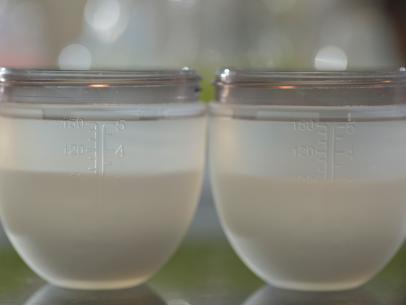
Few foods spark as much curiosity and controversy as natto. This humble fermented soybean dish has become a cultural touchstone, dividing opinion in Japan and worldwide. Today’s exploration takes readers on a sensory journey to answer the burning question, “What does natto taste like?”
What does Natto taste like?
Picture a typical breakfast scene in Eastern Japan: a simple bowl of steaming rice topped with glossy brown beans covered in gossamer-like strings. When chopsticks touch the surface, those infamous strings stretch upward like spider silk, and an unmistakable aroma wafts through the air. This is natto in all its glory.
Exploring What Does Japanese Natto Taste Like?

A Flavor Exploration of Natto
Japanese natto presents a fascinating complexity that makes it difficult to capture in simple terms. The taste is multifaceted, combining several distinct notes:
The Primary Flavors
- A rich, savory umami foundation
- Subtle, nutty undertones
- A slight bitterness that lingers
- An unexpected hint of sweetness
- A flavor reminiscent of aged cheese
The taste experience evolves with each bite. The initial impact is mild, but the flavor builds and develops over time. Many first-timers are surprised to find that the taste itself is far less intense than the aroma might suggest.
Natto Beans Taste Experience
The individual fermented soybeans offer an interesting taste journey of their own. When isolated from the stringy mass, a single bean reveals:
Bean-Specific Characteristics
- A firm exterior that gives way to a creamy center
- A concentrated burst of umami when bitten
- A texture similar to a well-cooked edamame but softer
- A subtle earthiness that’s reminiscent of mushrooms
The beans themselves have a milder flavor than when consumed with their fermented coating. This makes them an excellent gateway for those new to Natto, as consumers can gradually accustom themselves to the full experience.
Natto Aroma and Flavor Profile

The Unique Aroma and Flavor of Natto
The elephant in the room: Natto’s notorious aroma. The smell is often the biggest hurdle for newcomers, and it’s important to understand how it relates to the overall taste experience.
The Aromatic Profile
- Strong ammonia notes (similar to certain aged cheeses)
- Earthy undertones
- A distinctly fermented character
- Hints of mushroom-like umami
While the aroma is potent, it’s worth noting that the taste is often milder than the smell suggests. This disconnect between smell and taste can be surprising for first-time tasters, who often expect an overwhelming flavor based on the aroma alone.
What Does Black Natto Taste Like?
For those seeking a gentler introduction to natto, black natto offers an interesting alternative. Made from black soybeans, this variety presents some distinctive characteristics:
Black Natto’s Unique Properties
- A smoother, less stringy texture
- A milder aroma compared to traditional natto
- A slightly sweeter flavor profile
- A more subtle fermented taste
- A denser, meatier texture in the beans themselves
Many natto newcomers find black natto more approachable, making it an excellent starting point for exploring this traditional food.
The Texture Experience: A Crucial Component
No discussion about Natto’s taste would be complete without addressing its unique texture, which is as much a part of the experience as the flavor itself.
Textural Elements
- Sticky and gooey coating
- Stringy, web-like consistency when stirred
- Firm yet creamy beans
- A mouth-feel that changes as you chew
The texture is often cited as the most challenging aspect for newcomers, even more so than the taste or smell. The key is to embrace it as part of the complete sensory experience rather than fighting against it.
Making Natto More Approachable
Years of culinary exploration have revealed several strategies for making natto more accessible:
Enhancement Techniques
- Proper Preparation
- Stir vigorously (up to 400 times traditionally)
- Allow it to come to room temperature
- Mix with traditional condiments
- Complementary Ingredients
- Soy sauce for umami depth
- Karashi mustard for heat
- Chopped green onions for freshness
- Grated daikon radish to reduce sliminess
- Integration Methods
- Mix with hot rice
- Incorporate into scrambled eggs
- Add to stir-fries
- Use in fusion dishes
Read more: What Do Capers Taste Like? Dynamic Salty, Briny, and Complex
Understanding Natto’s Place in Japanese Cuisine

The Essence of Natto in Japanese Cuisine
Natto’s taste experience is deeply intertwined with its cultural significance. In eastern Japan, it’s a beloved breakfast staple, while in other regions, it might be consumed less frequently. This regional variation speaks to the personal nature of taste preferences, even within its country of origin.
Health Benefits: A Tasty Path to Wellness
While taste is subjective, Natto’s health benefits are undeniable. Understanding these benefits can help appreciate its unique flavor profile.
Nutritional Highlights
- High-quality plant protein
- Rich in vitamin K2
- Abundant probiotics
- Heart-healthy compounds
- Digestive enzymes
The fermentation process that creates natto’s distinctive taste also produces these beneficial compounds, making it a true functional food.
Modern Variations and Adaptations
The traditional Natto experience has evolved to accommodate changing tastes and preferences.
Contemporary Options
- Low-odor varieties
- Different bean varieties
- Various fermentation techniques
- Ready-to-eat preparations
- Fusion-style serving suggestions
Expert Tips for First-Time Tasters
Experience with guiding many people through their first natto experience has yielded these top recommendations:
Getting Started
- Choose the Right Variety
- Start with black natto for a milder experience
- Look for premium brands known for consistent quality
- Consider low-odor options initially
- Perfect Your First Bite
- Begin with a small portion
- Mix thoroughly with traditional condiments
- Combine with hot rice
- Take time to appreciate the complexity
- Progression Plan
- Start with milder preparations
- Gradually move to more traditional serving styles
- Experience different combinations
- Trust your palate to adapt
The Evolution of Natto Taste
Like many acquired tastes, natto appreciation often develops over time. What might seem challenging at first can become deeply satisfying with repeated exposure. The key is to approach it with an open mind and understand that taste preferences are highly personal and can evolve.
Conclusion
After this deep dive into what natto tastes like, it’s clear that this traditional food offers a unique and complex sensory experience that goes far beyond simple flavor descriptors. Whether approaching it as a curious food enthusiast or a health-conscious diner, natto presents an opportunity to explore a truly unique aspect of Japanese cuisine.
The experience of Natto is deeply personal, and individual reactions might differ significantly. The key is to approach it with curiosity and openness, understanding that sometimes the most rewarding culinary experiences come from stepping outside conventional comfort zones.
For those ready to embark on their Natto journey, starting with milder variations and proper preparation techniques is recommended. It might just lead to joining the ranks of devoted natto enthusiasts who can’t imagine breakfast without this fascinating fermented delicacy.
Whether ending up loving or simply appreciating natto, understanding its taste is key to experiencing one of Japan’s most intriguing culinary traditions. As they say in Japan, “Itadakimasu!” Let’s eat!
Learn More About Grilling
If you want to learn more about grilling, check out these other helpful resources!











